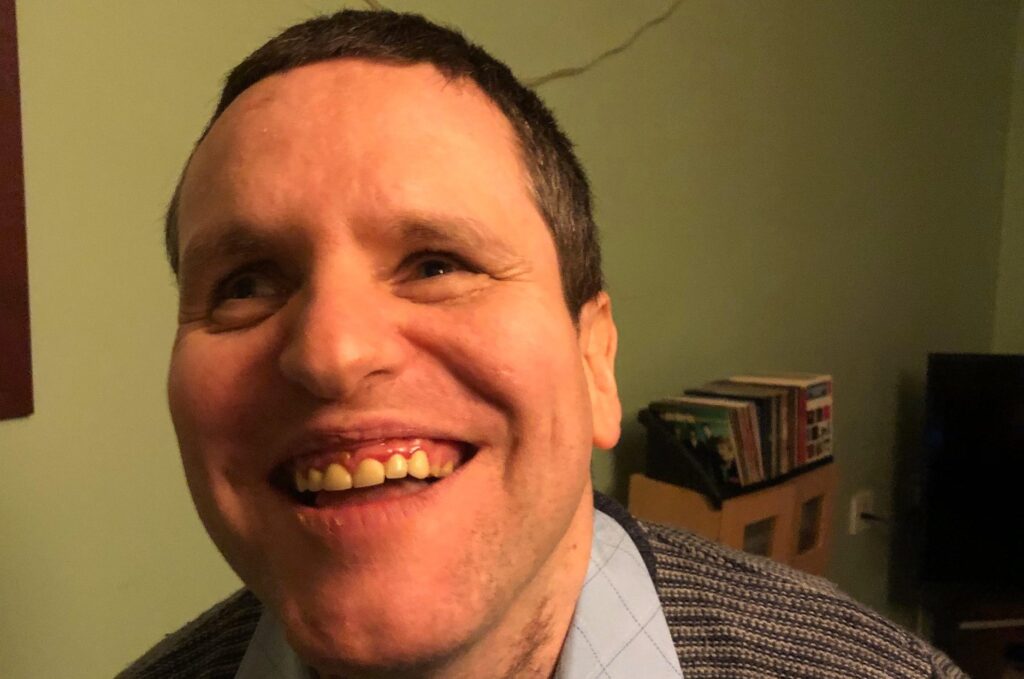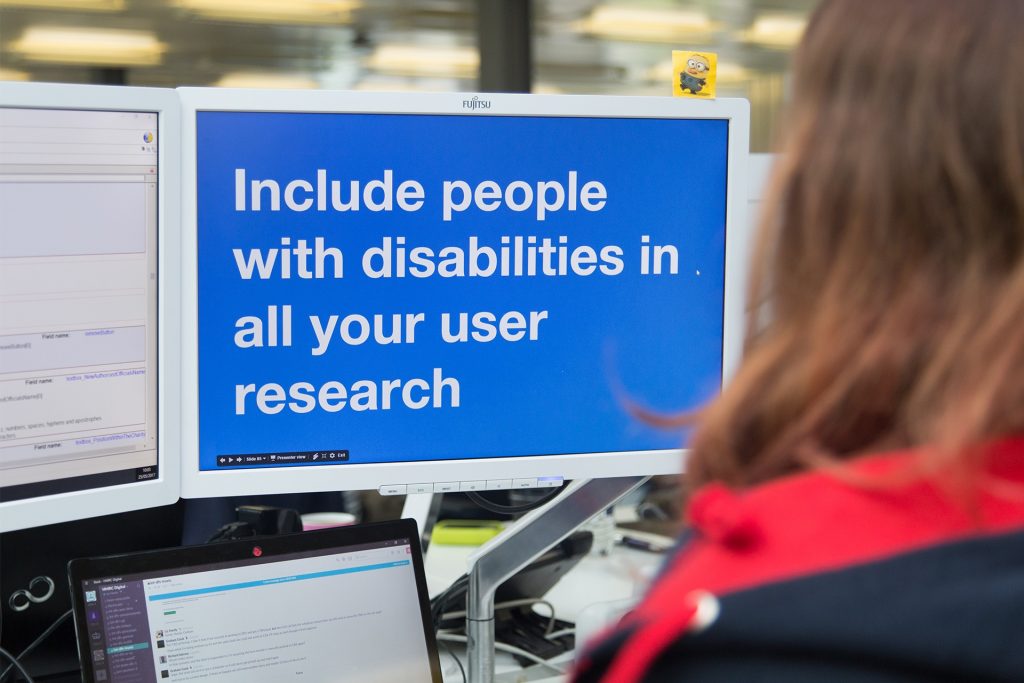Today marks the 8th anniversary of Global Accessibility Awareness Day (GAAD), an annual event to promote dialogue, discussion and awareness of digital inclusion for people with all levels of ability. Originally created as a day for developers to share accessibility knowledge with one another, it has transformed into a day when we all can reflect on the challenges we still experience, and as a global community, begin to change the world.
As User Researchers, we interact with many remarkable people when conducting research. We want to take this opportunity to tell their stories and show how they have interacted with our services and helped us with our user research.
Angela’s story
Angela is a housing officer for a housing cooperative and has worked in the industry for almost 15 years. About 6 years ago, Angela was diagnosed with a detached retina and had major surgery to get it reattached.
Angela’s visual impairment makes it difficult for her to do tasks online and at work, so she uses assistive technology to help her. She uses Dolphin SuperNova, plus large monitors, and a keyboard and camera at work. At home, she is doing a university course and the university disability department has given her some equipment.

I had ongoing issues for almost 2 years. It was a nightmare to be honest. I’ve got my sight back which is really important, but I have got distortion, blind spots and a couple of wavy moments. Then, about a year and a half ago, I detached the retina in my other eye. I was absolutely devastated because that was my good eye.
I got ZoomText first. I don't know how I would manage without it. With ZoomText and SuperNova you don't get distortion with text. I couldn't do my job without it.
Angela goes online to send emails, do online shopping and uses government websites to research what is going on in the housing world for work. She sometimes struggles online, and may even leave a website if it is difficult to use. It's really important for Angela to be able to complete tasks like claiming tax back using her assistive technology.
Angela first interacted with HMRC online to get tax back on her uniform and took part in a user research session.
I know HMRC have to consider accessibility needs when designing all of their services including taking into account people who have visual impairments and I can’t begin to tell you the amount of people with visual impairments that struggle online. I think it’s great that HMRC get us involved.
Angela hopes that we will carry on improving our online services to make them even more accessible and continue to do user research with people who have accessibility needs.
I probably wouldn’t end up claiming for my uniform if the website wasn’t accessible. I’m just happy that this sort of thing is happening. I wish everyone was considering this sort of thing.
Alan’s Story
For the past 4 months, Alan has worked for the Scottish Government in energy and climate change. Prior to that, he worked in the voluntary sector for a variety of charities.
Alan was born with a visual impairment and can only see shadows. He relies completely on a screen reader to use his computer at work and to do anything online at home.

I've been visually impaired since birth and been using a Jaws screen reader user since I went to university over 20 years ago. I've got light and dark perception and I can see shadows, so I would just be able to see a blob without any clarity or definition.
Alan thinks it is really important to build websites with accessibility users in mind from the very start: if this is just considered at the end, this can make it even harder for users with assistive technology.
It’s so important that the website is accessible, as people who can use the website can do this in their own time and have ease of use, but if you can’t, then you are restricted to phoning up and certain opening times, which are often busy.
Doing user research with users that have access needs is the most direct way of making accessible and easy-to-use online services. By working closely with users, we develop a deeper understanding and gain new perspectives on the impact that screen readers, magnifiers and even devices like mechanical tables can have on their day-to-day lives.
It's such a good first step that this research is happening and raising awareness. I'm always willing to take part in more of this research to help chip away at things. It’s worth spending time doing that and giving feedback so the next time you go on the website, it’s a smoother ride.
Designing with accessibility in mind means envisioning all users as having needs that require attention. Focusing on accessibility from the beginning influences the direction in which a design is taken. It also means we develop robust research insights, which teams can learn from and build upon in future work to effectively create services for everyone.
If you would like to help make our services better, please sign up to our user panel.
Shila Odedra and Bethany Waugh
Check out our current vacancies. They're updated regularly so worth keeping an eye on.
Follow us on Twitter @HMRCdigital
To make sure you don't miss any of our blog posts, sign up for email alerts
